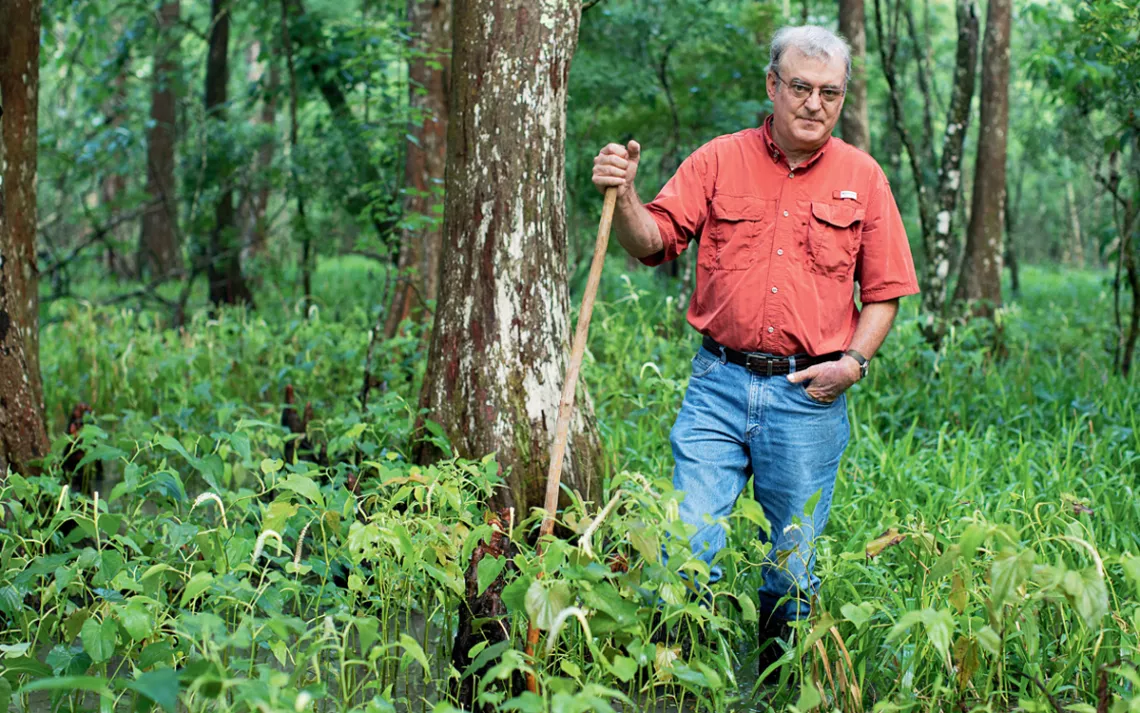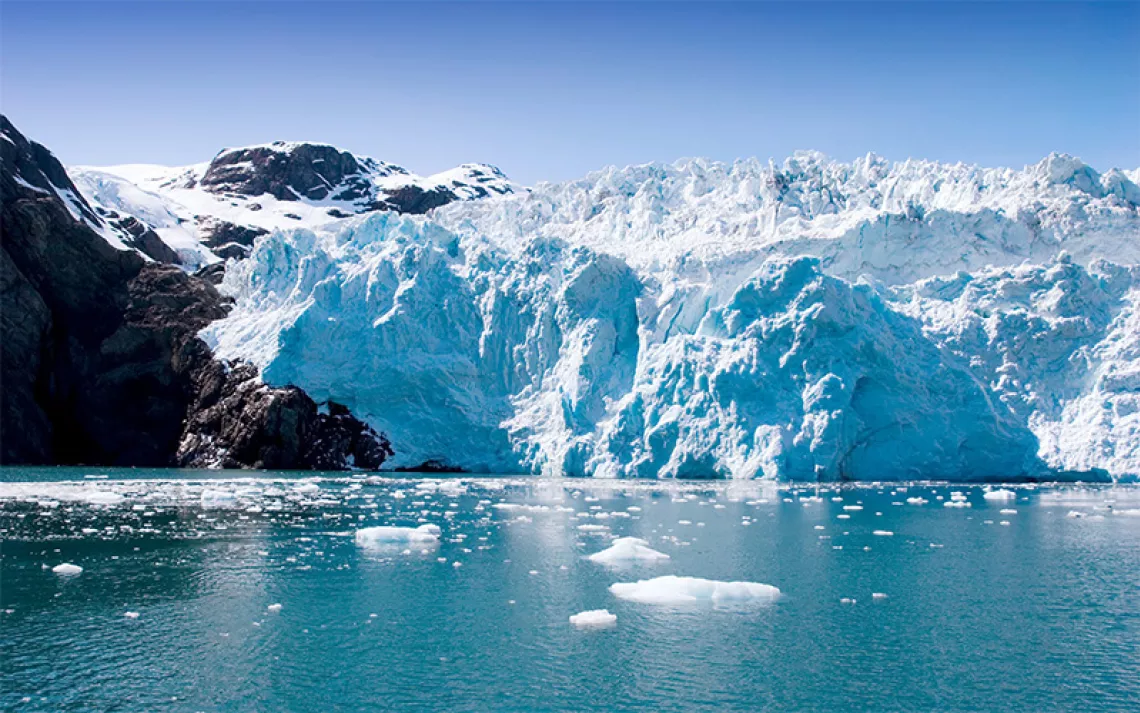Kerry St. Pé Has a Plan to Restore Louisiana's Eroding Coastline
Hurricane Katrina was a wake-up call for the state of Louisiana, but not for St. Pé

Kerry St. Pé of the Barataria-Terrebonne National Estuary Program | Photo by Bryan Tarnowski
DRIVING THROUGH THE storm-battered bayou in the weeks after Hurricane Katrina in August 2005, Kerry St. Pé scanned the landscape, looking for his childhood home. The house had been ripped off its foundation by the storm surge.
"It was a quarter mile up on Highway 23, in two pieces, marked St. Pé Part 1 and St. Pé Part 2," he says.
Katrina was a major wake-up call for Louisiana, but not for St. Pé. As director of the Barataria-Terrebonne National Estuary Program (BTNEP), he had sounded the alarm for years about the state's eroding coastline, caused by river levees that had starved the delta of silt as well as industrial canals and pipelines that had allowed destructive saltwater intrusion. Without miles of swamp and marsh, much of southeastern Louisiana is vulnerable to devastating floods.
Now director emeritus of BTNEP (he retired in 2014), St. Pé continues to advocate for a plan to use sediments from the bottom of the Mississippi River and other bodies of water to rebuild lost marshland. One of BTNEP's projects is the restoration of a 5,000-foot-long ridge and its adjacent wetlands at Port Fourchon, the epicenter of the Gulf of Mexico's oil and gas industry.
St. Pé's family has lived in Louisiana's bayous since the 1760s. He grew up fishing after school and eating red beans and rice on Mondays. "To work on the issues that threatened the very existence of the culture and people that I love has been my dream job," he says.
He regularly attends restoration strategy sessions and volunteers for the annual Bayou Lafourche Cleanup—a project he initiated in 2012 that has plucked more than 20 tons of trash out of the water.
Saving Louisiana's coastline will take political cooperation and money, both in short supply in the state. But St. Pé refuses to give up.
"If people are forced to move and spread out all over the country, that's a tragedy right there. The loss of this culture," he says. "That's what I fear the most."
This article appeared in the July/August 2017 edition with the headline, "Cajun Son."
Disappearing Act Louisiana has lost about 1,900 square miles—more than one and a half times the area of Rhode Island—in the last 80 years.
 The Magazine of The Sierra Club
The Magazine of The Sierra Club







